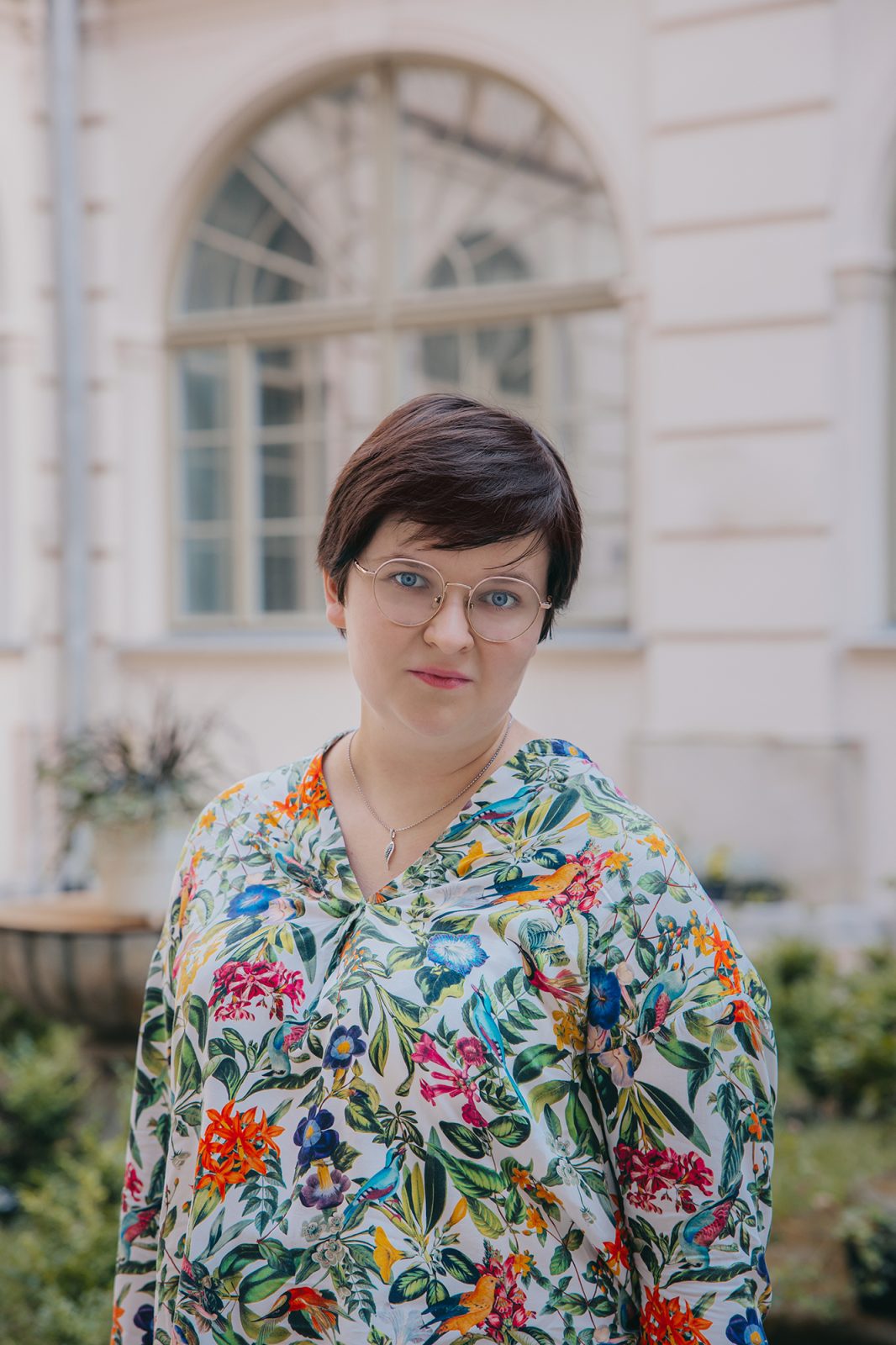
Young researchers at the UWr – Jagna Rita Sobel
At the University of Wrocław, we are exceptionally appreciative not only of finalists and laureates of Olympiads and candidates who have passed their school-leaving exams, but above all of those who want to develop their interests and become ‘Young Researchers’. Today we will tell the story of our history student.
It started two years ago. – After a paper presented at the forum of the Poznań branch of the Polish Heraldic Society, I was contacted by Ms dr Anna Adamska from the Utrecht Centre for Medieval Studies at Universiteit Utrecht – says Jagna Rita Sobel, a participant in the “Young Researcher” programme. The doctor offered Jagna not only to participate as a speaker at the International Medieval Congress at the University of Leeds, but also to co-organise two panels on medieval sphragistics in East Central Europe (‘Medieval Seals and Their Modern Study in East Central Europe, I: Ecclesiastic Seals, Their Uses, and Practices of Sigillation’ and ‘Medieval Seals and Their Modern Study in East Central Europe, II: Investigation of Seals – Challenges and Possibilities’).
Cooperation with dr Anna Adamska was not only a great honour for our student, but also an opportunity to gain valuable experience, establish new scientific contacts and gain direct contact with the latest trends and achievements in the field of medieval studies. – The International Medieval Congress, held at the UK’s University of Leeds, is one of the two most important (besides the International Congress on Medieval Studies in Kalamazoo, USA) scientific events in the world devoted to this subject – says the student. – My trip to Leeds would have been very difficult had it not been for the support of the University under the Young Researcher 2023-2025 grant – she admits.
A simple application form, transparent rules and a quick deadline for the award were undoubtedly an advantage in applying for the funding. Thanks to this support, from 1 to 4 July 2024, Ms Jagna was able to present in Leeds a summary of her more than four years of research on the medieval sphragistics of parish priests of Silesian parish churches, a hitherto almost unexplored topic, by giving a paper entitled ‘Medieval Seals of Parish Priests in Silesia: Between Universal Models and Individual Solutions’.
The scientific contacts made during the Leeds Congress brought her into contact with the experiences of Western researchers in the field of medieval diplomatics, another important area of research interest for our young scientist, alongside sphragistics and heraldry.
This is a field she would like to pursue while working on her doctorate. – I am currently finalising my research on parish priest sphragistics,’ she says. – The most important result is the edition of these sources in the form of a catalogue, which will be published in a few weeks by Księgarnia Akademicka in Krakow. This is the first publication of its kind not only in Poland, but also in Europe, devoted to an issue that has so far remained outside the research mainstream, both in our country and abroad.
And the fact that the research issues raised have filled an important gap in Polish sfragistics is evidenced, among other things, by the Aleksander Gieysztor Award, which is the most important distinction for young medieval researchers in Poland, awarded to Ms Jagna last year by renowned Polish medievalists for one of her articles on these sources.
Jagna Rita Sobel is a three-time scholarship holder of the Ministry of Education and Science (in the academic years 2021/2022, 2022/2023, 2023/2024). Her scholarly activity has also been recognised by Santander Universidades, whose chapter – made up of academics, students and Bank representatives – honoured her with a scholarship last year.
Author of five articles published in scientific journals (including for 100 and 70 points) and two chapters in multi-author monographs.
Member of the Council of the Faculty of Historical and Pedagogical Sciences and the Faculty Education Quality Assessment Team. She is a member of the Wrocław History Lovers Society (Polish History Society branch) and the Polish Heraldic Society (Poznań branch).
Why did she choose UWr? – For me, being a native of Wrocław, choosing the University of Wrocław was somewhat natural – says Jagna Rita Sobel.
She became interested in history when she was in secondary school and had already decided then that she would study this subject at our Historical Institute. – The fact that the Faculty of Historical and Pedagogical Sciences received the highest grade of A+ in an evaluation shortly before my matriculation was also important to me – she admits.
She discovered her research interests already in her first year of undergraduate studies, when, as part of a subject dedicated to the auxiliary sciences of history, she found herself in Professor Marek Wójcik’s group. – Thanks to Professor Wójcik, who became my master, I not only became a sphragist and expanded my interests to include diplomatics and heraldry, but also discovered what scientific work is, which today is my great passion.
Her future lies in doctoral studies at the University of Wrocław. This is something that her mentor prof. Marek Wójcik from the Historical Institute at the Faculty of Historical and Pedagogical Sciences is undoubtedly happy about.
– Ms Jagna’s substantive and organisational participation in the Leeds Congress in July is a great honour for our Institute. It happens that such young researchers themselves apply for participation in conferences, whereas it is extremely rare that they are offered co-organisation of a session at a very prestigious scientific event such as the Leeds meeting – emphasises prof. Wójcik.
On her return from Leeds, our student will travel to Munich to attend the Sommerakademie des Zentrums für Mittelalter und Renaissancestudien at Ludwig-Maximilians-Universität. And in September, she plans to attend the 21st General Meeting of Polish Historians in Białystok.
We are keeping our fingers crossed! Read more about the scholarship programme here.
Our other young researchers:
Complied by Katarzyna Górowicz-Maćkiewicz.
Date of publication: 12.07.2024



